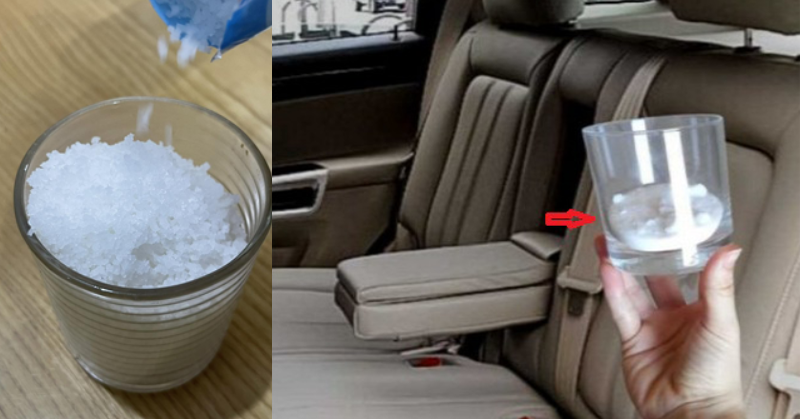As winter descends, drivers frequently encounter a familiar issue, but the remedy is surprisingly uncomplicated: a glass of salt in your car. Even mechanics vouch for this straightforward solution.
The Versatility of Salt
While salt is a kitchen staple, its applications extend far beyond culinary realms. It serves as a household powerhouse for cleaning, descaling, and deodorizing various surfaces, often outperforming commercial products.
Salt as a Moisture Absorber
An intriguing use of salt, particularly coarse or rock salt, lies in its moisture-absorbing capabilities. This type of salt, with its inherent drying agents, proves effective in small, enclosed spaces such as cabinets or drawers. But how does this relate to cars?
The Mechanic-Endorsed Car Hack
As temperatures plummet, car issues like engine or battery failures become more prevalent. Moisture accumulation inside the car, especially on glass surfaces, can be a genuine nuisance.
Humidity within a car during winter can lead to component deterioration and mold formation. This is where salt steps in. By managing humidity, salt becomes a safeguard for the car and its internal components.
Using Salt to Combat Car Humidity
Placing a glass of salt inside your car serves as a natural dehumidifier, reducing excess moisture and preventing condensation on windows. The ideal spot for this? Your car’s cup holder.
For heightened effectiveness, combine salt with charcoal. Place these ingredients in a plastic container, cover with a sock, and position it under the seat or near the air vents for optimal results.
Alternatives to Salt
While salt is a readily available solution for car moisture, other methods prove equally effective:
- Newspapers: Laying newspapers on the car floor can help absorb moisture.
- Silica Gel: Often found in small sachets with new purchases, silica gel balls can be placed in a cloth and set on the dashboard to combat humidity.
In Summary
Combatting car humidity in winter doesn’t necessitate expensive gadgets or intricate techniques. Everyday household items like salt, charcoal, newspapers, and silica gel offer effective solutions, ensuring a more comfortable and safe driving experience during colder months.”
